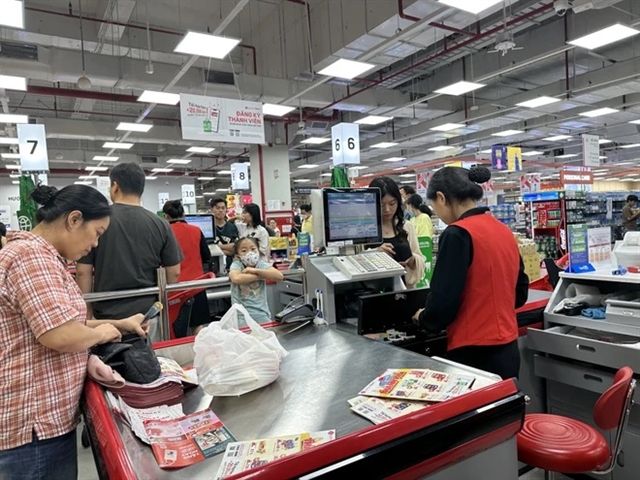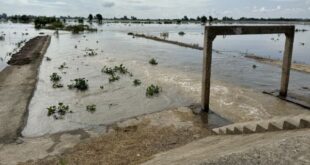 |
| Nylon bags are common to store items in supermarkets. — VNA/VNS Photo |
HÀ NỘI — The Ministry of Natural Resources and Environment (MoNRE) has taken a significant step by establishing criteria for the Vietnam Eco-label, specifically targeting environmentally friendly plastic packaging.
This initiative aims to encourage the responsible utilisation of natural resources while protecting the environment.
The eco-label includes biodegradable plastic packaging and environmentally friendly plastic packaging, primarily composed of polyethylene (PE) or polypropylene (PP).
These may come in various forms such as bags or films used for wrapping, covering, storing, and protecting the utility value of products, goods, in domestic or industrial, agricultural, and construction sectors.
The criteria for the Vietnam Eco-label for environmentally friendly plastic packaging include general requirements that involve products to be manufactured at facilities adhering to environmental protection laws and other relevant regulations.
There are three specific criteria concerning materials, substances, and fuels; technical characteristics and permissible limits of pollution parameters in the product; and recovery, recycling, processing, and disposal.
For the first criterion, concerning materials, packaging materials must originate from biodegradable plastic materials (for biodegradable plastic packaging) or clean recycled PE and PP plastics (for recycled plastic packaging). They should not contain any additives prohibited for importation or use in Việt Nam.
Moreover, the use of inks, dyes, and other additives must comply with environmental and health safety regulations for packaging production.
The criterion related to technical specifications and allowable limits for pollution parameters in the product must ensure quality according to national standards or equivalent international standards (if available).
For biodegradable plastic packaging, the minimum biodegradation rate should be 90 per cent within two years in natural environments, compost, or landfill waste sites.
For recycled plastic packaging, at least 20 per cent of the packaging materials must come from recycled plastic.
The last criterion regarding recovery, recycling, processing, and disposal includes plans for recovering and recycling used packaging, information about recycling facility addresses, the recovery and recycling process, disposal, recycling technology, solutions for recovering, recycling, processing, and disposing of used packaging, and environmental protection measures –all in compliance with legal regulations.
Plastic packaging persists in the environment for hundreds of years before complete decomposition, leading to pollution issues due to inadequate recycling and co-disposal with other types of waste. The plastic production process for packaging also has significant environmental impacts, such as greenhouse gas emissions, fuel consumption, and depletion of natural resources.
Efficient packaging production positively impacts both the economy and the environment by reducing costs associated with using petroleum-based plastic raw materials in the production process, cutting waste disposal expenses in landfills, decreasing resource extraction for plastic production, and lowering greenhouse gas emissions. — VNS
- Reduce Hair Loss with PURA D’OR Gold Label Shampoo
- Castor Oil Has Made a “Huge” Difference With Hair and Brow Growth
- Excessive hair loss in men: Signs of illness that cannot be subjective
- Dịch Vụ SEO Website ở Los Angeles, CA: đưa trang web doanh nghiệp bạn lên top Google
- Nails Salon Sierra Madre
 VnExpress News The News Gateway of Vietnam
VnExpress News The News Gateway of Vietnam





